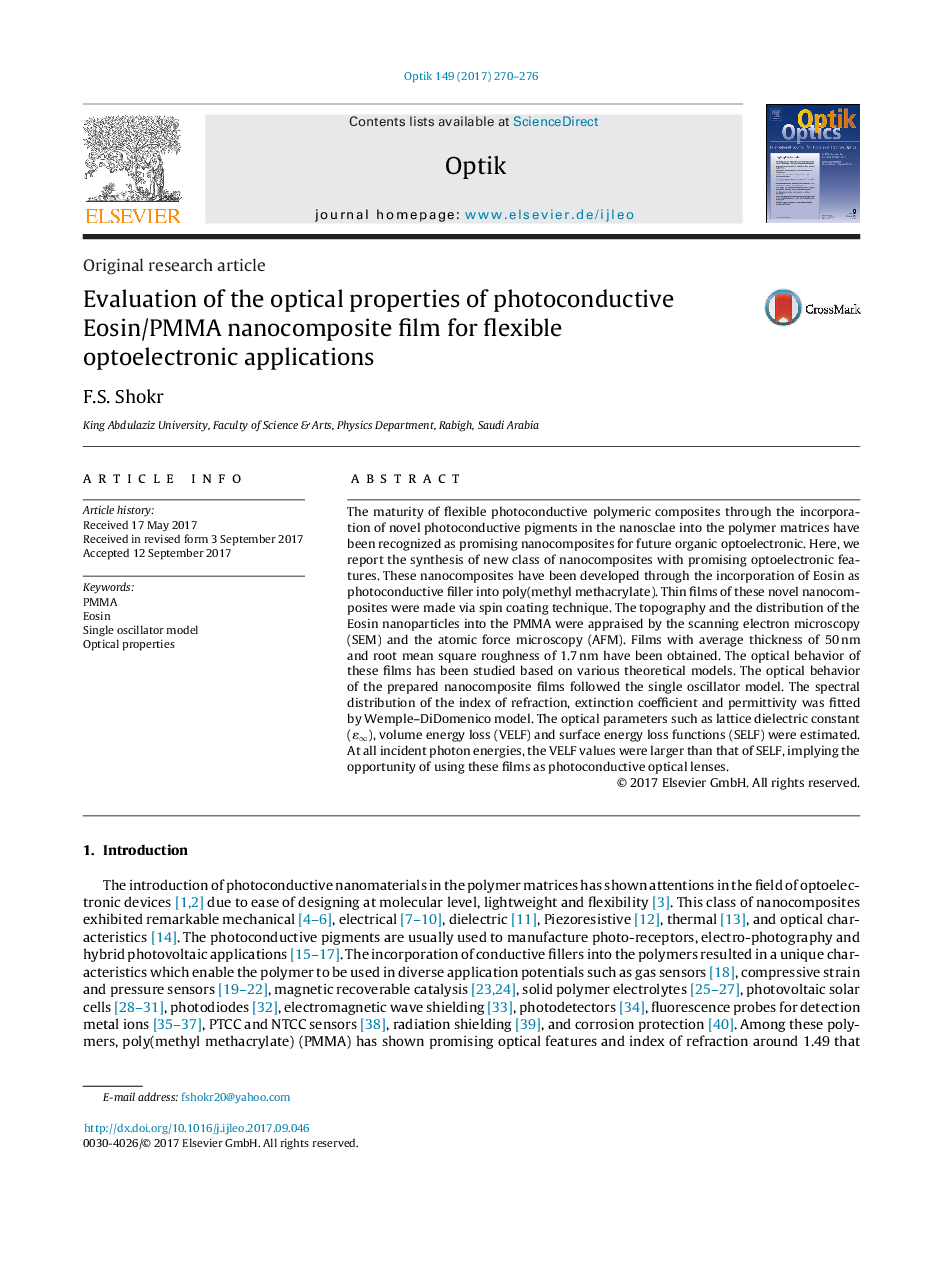| Article ID | Journal | Published Year | Pages | File Type |
|---|---|---|---|---|
| 5025110 | Optik - International Journal for Light and Electron Optics | 2017 | 7 Pages |
Abstract
The maturity of flexible photoconductive polymeric composites through the incorporation of novel photoconductive pigments in the nanosclae into the polymer matrices have been recognized as promising nanocomposites for future organic optoelectronic. Here, we report the synthesis of new class of nanocomposites with promising optoelectronic features. These nanocomposites have been developed through the incorporation of Eosin as photoconductive filler into poly(methyl methacrylate). Thin films of these novel nanocomposites were made via spin coating technique. The topography and the distribution of the Eosin nanoparticles into the PMMA were appraised by the scanning electron microscopy (SEM) and the atomic force microscopy (AFM). Films with average thickness of 50 nm and root mean square roughness of 1.7 nm have been obtained. The optical behavior of these films has been studied based on various theoretical models. The optical behavior of the prepared nanocomposite films followed the single oscillator model. The spectral distribution of the index of refraction, extinction coefficient and permittivity was fitted by Wemple-DiDomenico model. The optical parameters such as lattice dielectric constant (εâ), volume energy loss (VELF) and surface energy loss functions (SELF) were estimated. At all incident photon energies, the VELF values were larger than that of SELF, implying the opportunity of using these films as photoconductive optical lenses.
Related Topics
Physical Sciences and Engineering
Engineering
Engineering (General)
Authors
F.S. Shokr,
